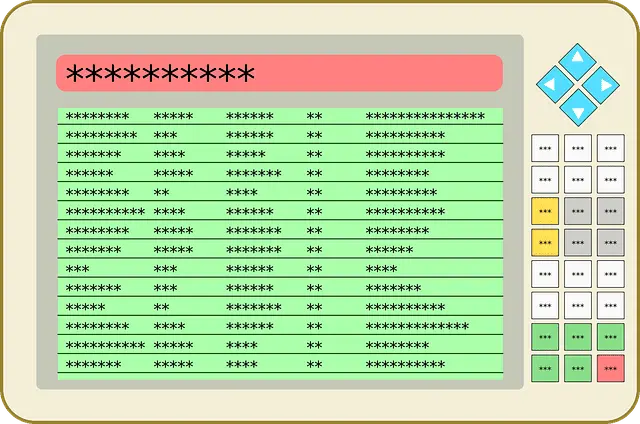Just in time (JIT) is a production strategy that focuses on delivering goods or services at the precise moment they are needed, without storing excess inventory. It aims to streamline operations, minimize waste, and optimize efficiency.
Imagine you’re a toy manufacturer. Instead of producing and stockpiling a large number of toys in a warehouse, JIT would involve producing toys based on customer orders. This means you only manufacture toys when there is a confirmed demand for them. By doing so, you reduce the costs associated with storing excess inventory, such as warehouse space, maintenance, and potential obsolescence.
JIT involves close coordination with suppliers and customers. Suppliers deliver materials and components exactly when they are needed for production, and finished products are shipped directly to customers or retailers without being stored for long periods. Production planning and management play a key role in the JIT system.
Relevance of just in time
Just in time (JIT) holds significant relevance in today’s business landscape due to its numerous benefits and alignment with modern market dynamics. Here are some key reasons why JIT is relevant:
- Cost Reduction: JIT helps minimize inventory costs by reducing the need for storing excess materials or finished products. This leads to lower warehousing expenses, decreased risk of obsolescence, and optimized use of capital.
- Waste Elimination: JIT aims to eliminate waste in various forms, including excess inventory, overproduction, waiting times, and defects. By streamlining processes, JIT reduces non-value-added activities and enhances overall operational efficiency.
- Improved Quality: JIT emphasizes continuous improvement and quality control. By reducing the amount of inventory, problems, and defects are more likely to surface, enabling companies to address issues promptly and enhance product quality.
- Increased Flexibility and Responsiveness: JIT enables businesses to quickly adapt to changes in customer demand. With minimal inventory, companies can be more agile in scaling up or down production, introducing new products, or responding to market fluctuations.
- Enhanced Customer Satisfaction: JIT allows companies to meet customer demands promptly and deliver products or services on time. This leads to higher customer satisfaction levels, improved customer loyalty, and increased competitiveness in the market.
- Efficient Supply Chain Management: JIT requires close collaboration with suppliers, fostering stronger relationships and communication channels. It enables better coordination, reduced lead times, and increased reliability in the supply chain, resulting in improved overall performance.
- Sustainability: JIT supports sustainability goals by minimizing waste, energy consumption, and environmental impact. With reduced inventory and optimized processes, companies can contribute to environmental preservation efforts.
How its works
Just in time (JIT) works by synchronizing the production and delivery of goods or services precisely when they are needed, to minimize waste and optimize efficiency. Here’s a simplified explanation of how JIT operates:
Demand Forecasting:
JIT starts with accurate demand forecasting. Companies analyze historical data, market trends, and customer orders to determine the expected demand for their products or services.
Just-in-Time Ordering:
Based on the demand forecast, companies place orders for raw materials, components, or finished goods from suppliers. These orders are timed to arrive just when they are needed for production or distribution.
Lean Production:
JIT emphasizes lean manufacturing principles, such as reducing setup times, improving production flow, and eliminating non-value-added activities. The goal is to maximize efficiency and minimize waste throughout the production process.
Pull System:
JIT employs a “pull” system, where production is triggered by actual customer orders rather than pushing goods into the market based on sales projections. This helps prevent overproduction and minimizes inventory buildup.
Close Supplier Collaboration:
JIT relies on strong relationships with suppliers. Suppliers are expected to deliver materials or components on time, in the required quantities, and with consistent quality to support JIT operations.
Quick Turnaround Time:
With JIT, companies strive to reduce lead times and minimize waiting times between production stages. This ensures that goods are available as close as possible to the time they are needed, eliminating unnecessary delays.
Continuous Improvement:
JIT encourages a culture of continuous improvement. Companies regularly evaluate processes, identify bottlenecks, and implement solutions to enhance efficiency, reduce waste, and optimize overall performance.
By aligning production closely with demand, JIT helps companies minimize inventory holding costs, reduce the risk of overproduction or stockouts, improve cash flow, and enhance customer satisfaction. However, successful implementation of JIT requires effective supply chain management, reliable logistics, and a strong focus on quality control throughout the entire production cycle.
How to implement just in time system
Implementing a just in time (JIT) system requires careful planning and coordination. Here are some key steps to consider when implementing JIT.
- Demand Forecasting: Accurately forecast customer demand to determine the necessary production levels and timing. Use historical data, market trends, and customer input to inform demand forecasting.
- Supplier Relationships: Build strong relationships with reliable suppliers who can provide materials or components on time. Collaborate closely with suppliers to ensure they understand and align with JIT principles.
- Inventory Management: Analyze existing inventory levels and identify areas where reductions can be made without impacting production or customer satisfaction. Set inventory targets and implement inventory control systems to maintain optimal levels.
- Production Efficiency: Streamline production processes to eliminate waste and increase efficiency. Optimize workflow, reduce setup times, and ensure smooth material flow to minimize waiting times and improve overall productivity.
- Quality Control: Implement rigorous quality control measures to detect and address defects early on. Emphasize a culture of continuous improvement and empower employees to identify and resolve quality issues promptly.
- Communication and Collaboration: Foster open communication and collaboration among all stakeholders, including suppliers, production teams, and customers. This facilitates timely information exchange and helps address potential bottlenecks or disruptions proactively.
- Continuous Evaluation and Adaptation: Regularly evaluate the effectiveness of the JIT system and make adjustments as needed. Monitor key performance indicators, solicit feedback from stakeholders, and continuously seek opportunities for improvement.
Successful JIT implementation requires a strong commitment from management, employee engagement, and a supportive organizational culture. It’s important to involve all relevant departments and provide adequate training to ensure a smooth transition to the JIT system.
Advantages of just in time
Just in time (JIT) offers several advantages for businesses. Here are some key benefits of implementing a JIT system:
- Cost Reduction: JIT helps minimize inventory costs by reducing the need for storing excess materials or finished products. This leads to lower warehousing expenses, decreased risk of obsolescence, and optimized use of capital.
- Waste Elimination: JIT aims to eliminate waste in various forms, including excess inventory, overproduction, waiting times, and defects. By streamlining processes, JIT reduces non-value-added activities and enhances overall operational efficiency.
- Improved Quality: JIT emphasizes continuous improvement and quality control. By reducing the amount of inventory, problems, and defects are more likely to surface, enabling companies to address issues promptly and enhance product quality.
- Increased Flexibility and Responsiveness: JIT enables businesses to quickly adapt to changes in customer demand. With minimal inventory, companies can be more agile in scaling up or down production, introducing new products, or responding to market fluctuations.
- Enhanced Customer Satisfaction: JIT allows companies to meet customer demands promptly and deliver products or services on time. This leads to higher customer satisfaction levels, improved customer loyalty, and increased competitiveness in the market.
- Efficient Supply Chain Management: JIT requires close collaboration with suppliers, fostering stronger relationships and communication channels. It enables better coordination, reduced lead times, and increased reliability in the supply chain, resulting in improved overall performance.
- Sustainability: JIT supports sustainability goals by minimizing waste, energy consumption, and environmental impact. With reduced inventory and optimized processes, companies can contribute to environmental preservation efforts.
Overall, JIT’s advantages include cost savings, waste reduction, improved quality, customer satisfaction, supply chain efficiency, and sustainability benefits. By embracing JIT principles, businesses can enhance their competitiveness and adapt to the dynamic demands of today’s markets.
Software to implement
Various software solutions can support the implementation and management of just in time (JIT) systems. Here are a few examples of JIT software:
Inventory Management Software:
Effective inventory management is crucial for JIT. Inventory management software helps track inventory levels, automate reordering processes, and optimize inventory turnover. It can provide real-time visibility into stock levels, generate demand forecasts, and trigger alerts when inventory falls below predetermined thresholds.
Supply Chain Management (SCM) Software:
SCM software facilitates end-to-end supply chain visibility and coordination. It helps manage supplier relationships, monitor supplier performance, and enable efficient collaboration. SCM software can assist in demand planning, order management, procurement, and logistics, supporting the JIT flow of materials and information.
Production Planning and Scheduling Software:
These tools aid in optimizing production processes, scheduling workflows, and minimizing production downtime. They provide real-time production visibility, capacity planning, and scheduling capabilities to align production with customer demand, ensuring timely delivery without excessive inventory.
Quality Control Software:
Quality control software helps monitor and maintain product quality throughout the production process. It can facilitate inspections, track quality metrics, manage non-conforming products, and enable continuous improvement initiatives to ensure that products meet customer specifications and minimize defects.
Lean Manufacturing Software:
Lean manufacturing software supports the implementation of lean principles, including JIT. It assists in streamlining processes, identifying and eliminating waste, and facilitating continuous improvement efforts. This software often includes features such as value stream mapping, Kaizen tools, and performance monitoring dashboards.
It’s important to note that different businesses may require different software solutions based on their specific needs and industry. It is advisable to evaluate the features, capabilities, and compatibility of various software options to find the most suitable JIT software solution for your organization.
Challenges of Just in Time
Implementing and maintaining a just-in-time (JIT) system can present several challenges for businesses. Here are some common challenges associated with JIT:
- Supply Chain Disruptions: JIT relies heavily on a well-functioning and reliable supply chain. Any disruptions such as delays in material delivery, supplier issues, or transportation problems can significantly impact JIT operations. It is crucial to have backup plans, strong supplier relationships, and contingency measures to mitigate the risks of disruptions.
- Demand Variability: JIT systems are highly sensitive to changes in customer demand. Fluctuations in demand, unexpected spikes, or sudden decreases can create challenges in maintaining the balance between supply and demand. Accurate demand forecasting, responsive production capabilities, and effective communication with customers are key to managing demand variability.
- Production Bottlenecks: JIT requires smooth and efficient production processes to maintain a steady flow of goods. Production bottlenecks, equipment breakdowns, or capacity constraints can disrupt the JIT flow, leading to delays or unfulfilled orders. Identifying and resolving bottlenecks and optimizing production capacity is essential for JIT’s success.
- Inventory Accuracy: JIT aims to minimize inventory levels, which requires precise inventory management and accuracy. Any errors in inventory tracking, miscounts, or discrepancies can lead to stockouts or excess inventory. Implementing robust inventory control systems, employing barcode or RFID technology, and conducting regular audits can help maintain inventory accuracy.
- Dependence on Suppliers: JIT relies on suppliers to deliver materials or components on time. If suppliers face challenges, such as quality issues, capacity constraints, or financial instability, it can disrupt the JIT system. Maintaining strong relationships, having clear communication, and regularly assessing supplier performance is important for managing supplier dependencies.
- Employee Training and Buy-In: JIT requires the active participation and buy-in of employees at all levels. It may involve changes in work practices, increased cross-training, and a cultural shift towards continuous improvement and waste reduction. Providing comprehensive training, fostering employee engagement, and addressing resistance to change is critical for successful JIT implementation.
- Lack of Buffer Stock: JIT systems operate with minimal inventory buffers, which leaves little room for error. Any unexpected disruptions or failures can quickly impact production and customer orders. Having contingency plans, backup suppliers, or emergency inventory reserves can help mitigate the risks associated with the lack of buffer stock.
Despite these challenges, with careful planning, proactive management, and continuous improvement efforts, businesses can successfully navigate and overcome the obstacles associated with implementing and sustaining a just-in-time system.



